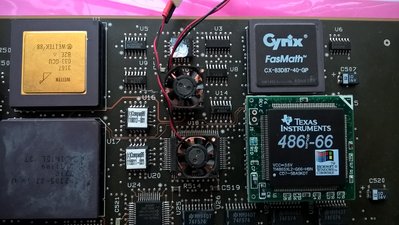Reply 40 of 148, by canthearu
wrote:That would be $594 June 1997. 1996 was $599 non MMX 200MHz, $84 K5-PR100 and ~$150 Pentium 100MHz. The game worked well only on […]
wrote:Nah, it was likely that targetting Intel's pipelined FPU was the only way to reach decent overall performance on processors of the day.
At least this way, the game worked pretty OK on most computers of the day. In mid 1996, when Quake released, the Pentium 233 MMX was Intel's top of the line mainstream processor
That would be $594 June 1997. 1996 was $599 non MMX 200MHz, $84 K5-PR100 and ~$150 Pentium 100MHz. The game worked well only on Intel computers for over a year, and even after that you needed >$250 K6 to get close to <$100 Pentium speeds.
wrote:however, most people would be running systems much slower than that.
Between the choice of having Quake run well only on Intel Pentium Processors, and crap elsewhere, vs having it just run like crap everywhere, the first option was the best.
Im talking about shipping two code paths, something ID did later anyway in Quake 3. There was a chance for no fpu version running decently(20fps) on non Intel 100MHz CPUs (K5/Cyrixes), maybe even fastest socket 3 ones.
fixed point certainly can be done, consider Atari Falcon (Motorola 68030 @ 16 MHz; Motorola 56001 @ 32 MHz) running Quake engine at ~6-10fps https://www.youtube.com/watch?v=hDXSMgW-r5M
https://www.youtube.com/watch?v=WpwlZgQPCpk&l … 3Ww_M5nMm10m0UM
A couple of points gai:
a) The K5 released only a few months before the release of quake, and initially at very slow speed (PR75 anyone). This would not have realistically been enough time to write a new 3D engine pipeline for quake to re-optimize for non-pipelined FPUs.
b) The K5 processor is very, very rare, especially just after release in 1996. ID software isn't going to spend valuable time to support 0.01% of processors, especially processors in the low end of the market, which are less likely to be used for gaming and also more likely to use pirated software.
The Fixed point renderer for the atari is certainly very impressive, but offers much poorer quality output then the renderer that ID software implemented. You can see sparkling in the texture mapping and there are the occasional z-buffering error like the door texture during the middle of the video.


